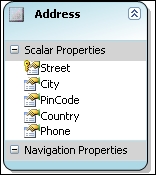-
Book Overview & Buying

-
Table Of Contents

Entity Framework Tutorial (Update) - Second Edition
By :

Entity Framework Tutorial (Update)
By:
Overview of this book
The ADO.NET Entity Framework from Microsoft is a new ADO.NET development framework that provides a level of abstraction for data access strategies and solves the impedance mismatch issues that exist between different data models
This book explores Microsoft’s Entity Framework and explains how it can used to build enterprise level applications. It will also teach you how you can work with RESTful Services and Google’s Protocol Buffers with Entity Framework and WCF. You will explore how to use Entity Framework with ASP.NET Web API and also how to consume the data exposed by Entity Framework from client applications of varying types, i.e., ASP.NET MVC, WPF and Silverlight. You will familiarize yourself with the new features and improvements introduced in Entity Framework including enhanced POCO support, template-based code generation, tooling consolidation and connection resiliency. By the end of the book, you will be able to successfully extend the new functionalities of Entity framework into your project.
Table of Contents (11 chapters)
Preface
 Free Chapter
Free Chapter
1. Introducing the ADO.NET Entity Framework
2. Getting Started
3. Entities, Relationships, and the Entity Data Model
4. Working with Stored Procedures in the Entity Data Model
5. Working with Entity Client and Entity SQL
6. Working with LINQ to Entities
7. Working with the Object Services Layer
8. Working with WCF Data Services
A. Advanced Concepts
Index

